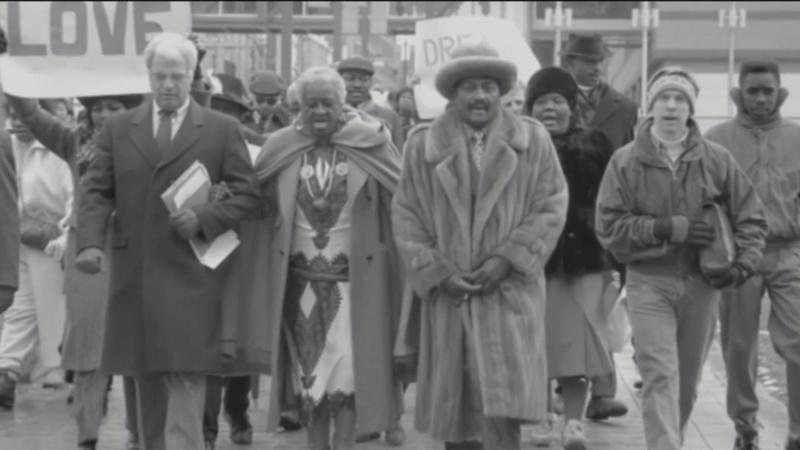Rochester’s Roots: Woman who saw the thick of the civil rights movement tells her story
[anvplayer video=’5088725′ station=’998131′]
ROCHESTER, N.Y. (WHEC) — You don’t have to read a book to learn about Black history.
Stories about life lessons learned during the struggle for equality may be as close as your neighborhood, your church, perhaps your own home, because those who lived through the movement have so much to teach.
So News10NBC embarked on a special project that we’re calling “80-30” where a young reporter interviews someone in their 80s
News10NBC’s Raven Brown chatted with Rochester native Janet McElrath. She’ll turn 89 on Feb. 20, 2022, and she saw the thick of the civil rights movement.
Brown: “Janet, for you, how was growing up in Rochester?”

McElrath: “It was good I attended number three school on Adams Street. At that time it was called the Third Ward and most of the children were all from the neighborhood it was mostly an integrated neighborhood.”
Brown: “What were you doing back in the 60s?”
McElrath: “In the 60s I started raising my family… I was married and had two children.”
This was also the same time of the very heightened and public civil rights movement with Dr. Martin Luther King Jr. leading the way.
McElrath: “When I was in college it starts there was student involvement on campus and I had gone to Morgan State University and we had the opening of the lunch counters… sit-ins at the lunch counter neighborhood because we were not allowed to sit at those lunch counters and we participated in that in our school. So when Martin Luther King came along was the other demonstrations and we actively participated in the organizations that we were involved in.”
Brown: “Back in Rochester, in 1964, five people were killed in a three-day riot with thousands of arrests and a lot of damage to the city… What was going through your mind when this happened?”
McElrath: “It was really kind of a very kind of scary time when you had children going to school and you didn’t know what was going to happen next, all through you supported it you were still really nervous about it.”
Brown: “To this day there is still the fight against racial injustice—especially after George Floyd and Daniel Prude here, and all of the protests we saw across the country. What’s the difference between what you saw then and the changes you’ve seen now?”
McElrath: “The communication is so much better, things are recorded, they know about their history, they know about who they are and the act of participation in marching and it involves everyone. It wasn’t just the Blacks marching. It was the whites marching, it was the old people marching it was the young people marching it was the right thing to do and you have such a good feeling about it because you know it’s the right thing to do and they’re marching for justice.”
She said she’s glad there’s progress, but says there’s always more that can be done.
“Just being aware of what is needed and participating is helpful,” McElrath said.
And seeing more people join together in a way she didn’t have growing up is history, she says she’s grateful she got to witness.